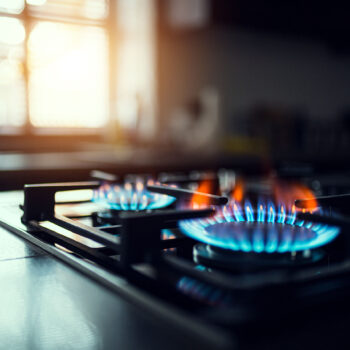
If You Are Buying a Home
Pay Attention to the Appliances
Buying a home brings excitement and big decisions. Paint colors, furniture, and backyard plans often take center stage, but one thing deserves careful attention before closing the deal is the appliances. If the appliances are included in your home deal, a quick check before signing helps catch problems early and avoids costly repairs later. Here’s a simple guide to spotting common appliance issues.
How to Check Kitchen Appliances
The kitchen often holds the busiest appliances in the home, so taking a few moments to check them can prevent unexpected problems later.
The Refrigerator
- Listen for unusual noises. A constant loud hum, knocking, or rattling points to trouble.
- Feel the inside. The refrigerator should feel cool, and the freezer should naturally feel ice cold, even during a quick tour.
- Check the door seals. Close the door on a piece of paper. A tight seal holds the paper in place. Loose seals let cold air escape and lead to higher energy bills.
The Oven and Range
- Turn on each burner. The flame or heating element needs to work quickly and evenly.
- Test the oven. Set it to a low temperature and feel for heat after a few minutes.
- Check the door. It should open and close smoothly, without loose hinges or trouble shutting.
The Dishwasher
- Run a short cycle. Listen for loud grinding sounds and look for leaks around the base.
- Check the interior. Look for broken racks, cracked spray arms, or old food stuck in hard-to-reach places.
- Inspect the seals. Gaps or tears around the door eventually lead to leaks.
A careful look at each appliance now saves time, money, and frustration after move-in day.
How to Check Laundry Appliances
Laundry machines work hard behind the scenes, so small issues can turn into big problems if overlooked.
The Washing Machine
- Start a quick wash. Watch for shaking, loud banging, or failure to spin.
- Look for leaks. Check the floor for water or signs of past puddles. (Water damage may indicate rot or leaks in the wall behind the washer.)
- Inspect the hoses. Look behind the machine for cracks in the hoses, bulges, or loose connections.
The Clothes Dryer
- Turn it on. The drum needs to spin smoothly, and warm air must flow.
- Test the door. It ought to latch securely and stay closed during the cycle.
- Check the lint trap. A clean trap works best and shows regular maintenance.
A quick test run of the clothes washer and dryer offers peace of mind and helps avoid surprise breakdowns or a dryer fire due to lint buildup.
Universal Warning Signs
Whether it’s kitchen or laundry appliances, here are some additional red flags:
- Unusual smells: Burnt, moldy, or chemical odors signal hidden problems.
- Corrosion or rust: These spots usually show long-term wear or poor care.
- Outdated appliances: Older models often do not work efficiently and inevitably need maintenance, repairs, or replacement.
Red flags usually lead to spending green money, so consider negotiating the replacement or repair of appliances into your home buying contract, or be prepared to make an appliance investment shortly after signing.
When in Doubt, Call a Pro
Home inspections often focus on the structure, plumbing, and roof. Appliances sometimes get less attention. Applying the recommendations in this article gives you peace of mind that you are not only buying a quality house, but also appliances that will work. If you have questions or concerns about your appliances, asking a trusted appliance technician to take a closer look is smart! Give River City Appliance a call. We offer honest assessments and reliable maintenance and repair services for most appliance makes and models, whether under warranty or not. Give us a call today and settle your questions before making your offer!
- Posted by River City Appliance Blog
- On July 24, 2025
- 0 Comment




0 Comments